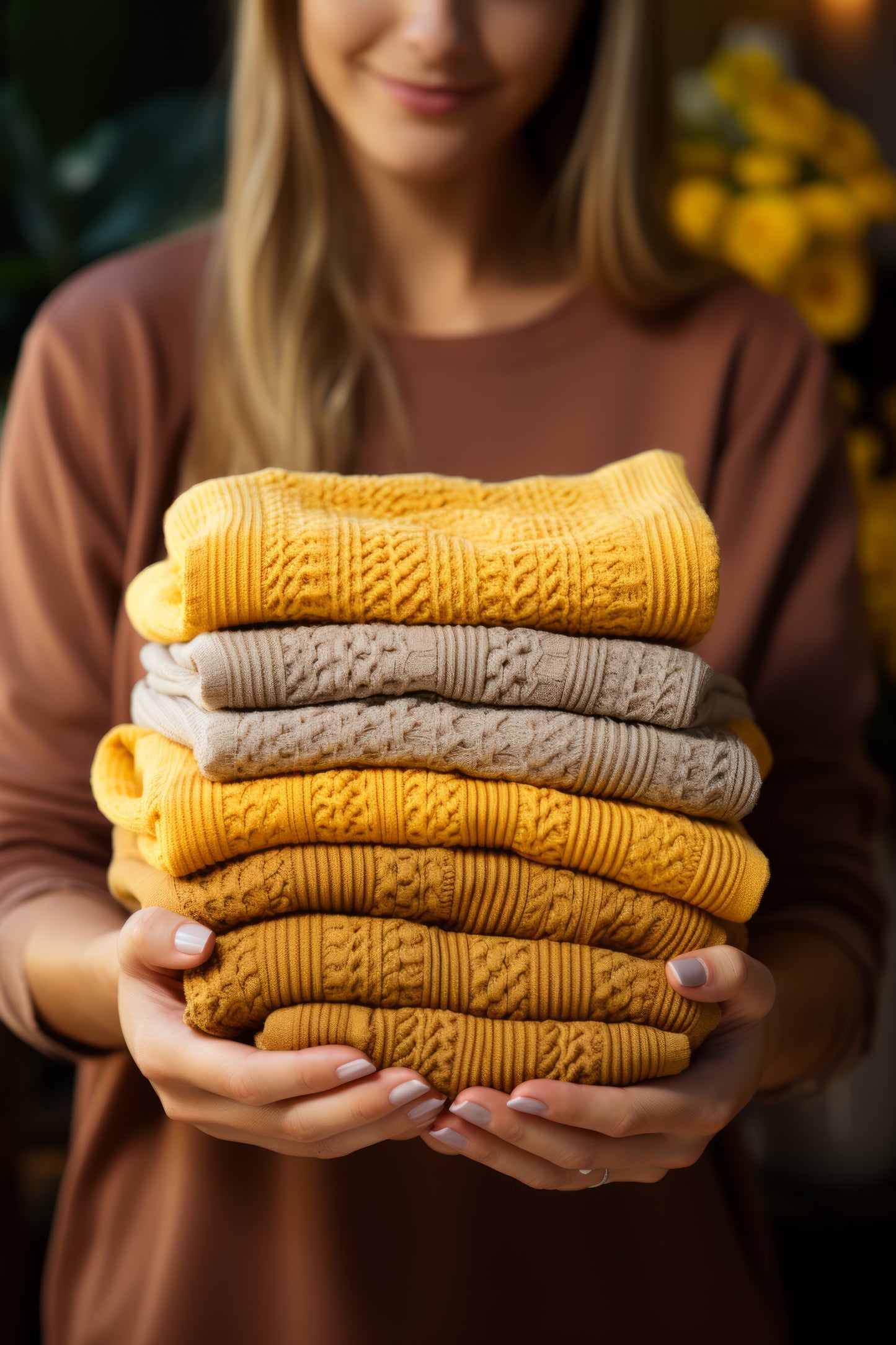
Caring for hand-knitwear is essential to preserve its beauty and longevity. By following proper maintenance techniques, you can ensure that your cherished knitted items remain in excellent condition for years to come.
This comprehensive guide will be brought to you across the next few blog posts. We will explore various aspects of looking after your hand-knitwear and provide you with valuable tips and insights.
Part Two: Washing, drying and what to do if a horrid little stain appears!
Washing and Drying Techniques
The fibre content of yarn plays a significant role in determining the care instructions for your knitting projects. Different fibres have unique characteristics and properties that influence how they should be cared for. Here's how fibre content affects care instructions:
Wool and Animal Fibers: Wool, alpaca, mohair, and other animal fibres are known for their warmth, softness, and breathability. However, these fibres require special care to avoid felting, shrinking, or stretching. They generally benefit from gentle hand washing in lukewarm water using a mild detergent or wool wash. Avoid agitating or wringing the item to prevent damage. Reshape and lay flat to dry, preferably on a clean towel or blocking mat.
Acrylic and Synthetic Fibers: Acrylic and other synthetic fibres are often chosen for their affordability, durability, and easy care. They are typically machine washable and resistant to shrinking or stretching.
Follow the manufacturer's instructions for machine washing, using a gentle cycle and cold water. However, avoid high heat when drying, as it can melt or deform the yarn. Instead, opt for low heat or air drying.
-
Cotton and Plant Fibers: Cotton, linen, and other plant-based fibres are known for their breathability and ability to keep you cool. These fibres are generally machine washable. Use a gentle cycle with cold or lukewarm water and a mild detergent. Due to the lack of elasticity in these fibres, reshape and lay flat to dry to avoid stretching.
-
Silk and Luxury Fibers: Silk and luxury fibres require delicate care to maintain their lustre and softness. Hand washing is typically recommended for these fibres. Use a gentle detergent suitable for delicate fabrics and lukewarm water. Avoid wringing or twisting the item and instead gently squeeze out excess water. Dry flat on a clean towel or blocking mat.
-
Blends and Specialty Yarns: Yarns that are blends of different fibres may have care instructions that combine the needs of each fibre. Read the label or check with the manufacturer for specific care guidelines. Speciality yarns, such as those with beading or sequins, may require extra care or hand washing to preserve the decorative elements.
Hand washing delicate knitted items require gentle handling and attention to detail to ensure their preservation.
Here's a step-by-step guide to hand-washing delicate knitted items:
-
Prepare the Washing Area:
-
Find a clean and spacious sink or basin to fill with lukewarm water.
-
Gather a mild detergent suitable for delicate fabrics, preferably one recommended for hand washing - I like using Soak, it’s gentle and really cares for your knits I use the scent Fig (it's smells amazing!)
-
Sort and Pre-Treat:
-
Sort your knitted items based on colour and fibre content to avoid colour bleeding or damage.
-
If there are any stains or soiled areas, pre-treat them before washing. Use a small amount of detergent and gently massage it into the affected.
-
Fill the sink or basin with lukewarm water. Avoid extreme temperatures, as they can cause felting or shrinking of delicate fibres.
-
Add a small amount of mild detergent to the water and swirl gently to create a soapy solution.
-
Immerse and Soak - Gently press down on the item to ensure it is fully saturated. Avoid excessive agitation or wringing, as it can damage the fibres.
-
Clean and Rinse.
-
Submerge the item in the clean water and gently agitate to remove any residual detergent. Repeat this rinsing process if necessary.
-
Remove Excess Water:
-
Carefully lift the item from the water, supporting its weight to prevent stretching or distortion.
-
Gently squeeze the knitted item, applying light pressure to remove excess water. Avoid twisting or wringing, as it can damage the fibres.
-
Reshape and Dry:
-
Lay a clean towel on a flat surface and place the knitted item on top.
-
Gently reshape the item to its original dimensions, smoothing out any wrinkles or creases.
-
Allow the item to air dry completely, away from direct sunlight or heat sources.
Remember to always refer to the care instructions provided by the yarn manufacturer and adjust the washing process accordingly.
By following these steps and practising gentle handling, you can keep your delicate knitted items clean and well-maintained!
Happy Knitting!
~ Jo xx
